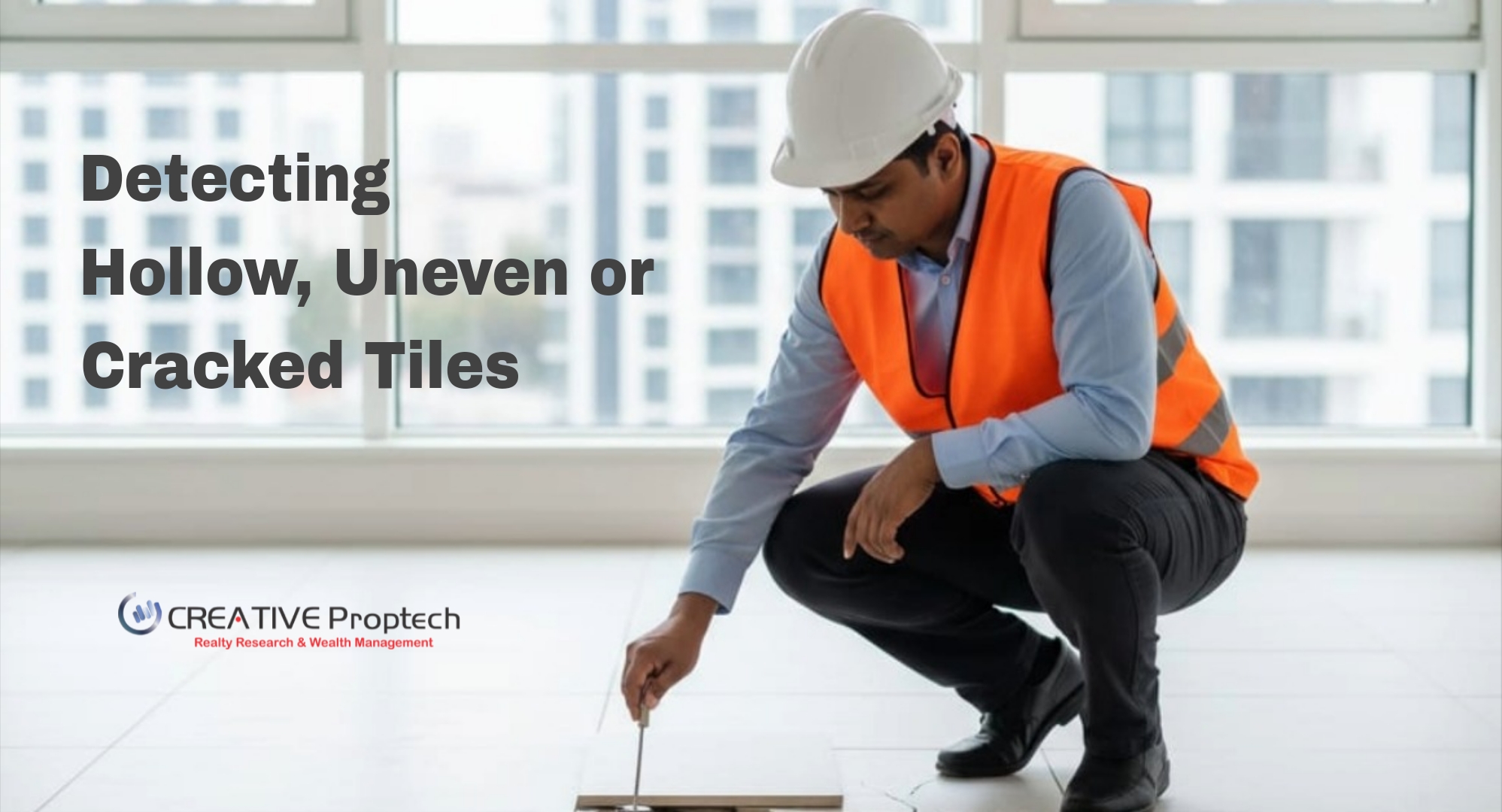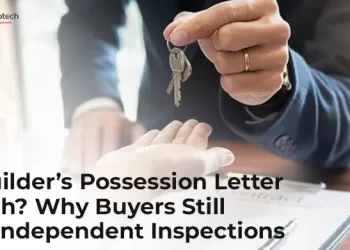
Buying a new home is one of the biggest milestones in life, and in India’s fast-growing real estate market, homebuyers expect quality construction and flawless finishing. However, one of the most commonly overlooked issues during possession is tile-related defects. In newly constructed apartments, problems such as hollow, uneven, or loose tiles, cracks, and improper grouting are extremely common. These flooring issues often become visible only after weeks or months of living in the property, making repairs more complicated, time-consuming, and expensive. This detailed home inspection guide helps you understand how to detect hollow or uneven tiles before taking possession in 2025, ensuring that your investment remains protected.
Why Tile Inspection Matters in Indian Homes
Tiles are more than just a part of interior aesthetics; they affect safety, durability, and long-term maintenance. In Indian cities, especially metro areas like Mumbai, Delhi, Pune, Bangalore, and Hyderabad, developers often complete construction quickly to meet deadlines. This sometimes leads to improper tile laying, insufficient adhesive, or rushed curing time. If not checked at the time of possession, these issues can later cause tiles to crack, sound hollow, loosen, or even pop up during seasonal temperature changes. Detecting tile defects early helps you avoid disputes with the builder and ensures that repairs are done before you move in.
How to Detect Hollow Tiles in a New Home
Hollow tiles are the most common problem in new flats across India. A tile sounds hollow when inadequate adhesive is used or when the base surface is not properly prepared. To check for this, simply take a small metal object like a coin, key, or even a screwdriver and tap gently across the tile surface. A solid tile produces a sharp, firm sound, whereas a defective or hollow tile produces a hollow or echo-like sound. You should test this across the living room, bedroom, kitchen, and especially the balconies and bathrooms, where tile adhesion is more challenging. If multiple tiles in a line sound hollow, it usually indicates that the entire batch has been improperly laid and needs to be reinstalled by the builder.
Checking for Uneven Tiles and Lippage
Uneven tiles, also called tile lippage, occur when adjacent tiles are not at the same height. This not only ruins the visual appeal of your floors but also creates a major tripping hazard. During inspection, walk barefoot across the entire floor and focus on transitions — between the hall and kitchen, rooms and bathrooms, and balcony thresholds. Try running your hand across the edges of tiles; any bump or sharp elevation indicates improper levelling. In 2025, homebuyers increasingly prioritise finishing quality as part of their home inspection checklist, so uneven tiles are a strong indicator of rushed or unskilled workmanship. If you spot any irregularities, highlight them immediately to the builder and request rework before signing the possession papers.
How to Identify Cracked or Weak Tiles
Even brand-new apartments can have cracked tiles due to poor-quality material, mishandling during construction, or structural stress. Inspect all tiles under bright light or natural sunlight, as cracks are easier to spot this way. Hairline cracks may appear harmless at first, but they tend to expand over time, especially in humid regions or areas with heavy foot traffic. Pay special attention to the corners of rooms, the edges of skirting tiles, and bathroom floors. If you notice multiple cracks, it may indicate that the entire flooring was subjected to stress or was not allowed to cure properly. Cracked tiles should always be replaced before possession, as they weaken the overall flooring and reduce the resale value of the property.
Bathroom and Balcony Tile Inspection
Bathrooms and balconies require extra care because they deal with water exposure every day. In these areas, hollow tiles or loose tiles can cause water seepage, dampness, and leakage to the floor below. Start by checking the slope of the floor, ensuring water flows naturally toward the drain and does not stagnate. Improper slope is one of the most serious construction defects and should be corrected immediately. Also, examine the tiles around the drain, as these are the areas most prone to cracking. Tap the tiles to detect hollow spots and inspect the grouting for gaps, open joints, or discolouration. Good waterproofing begins with properly laid tiles, so never skip a detailed inspection here.
Check the Quality of Grouting and Tile Joints
Even if tiles are laid well, poor grouting can eventually lead to leakage, mould growth, and tile loosening. Check whether the joints are filled properly and whether the grout material appears even and smooth. Cracked or missing grout allows water to seep under the tiles, weakening the adhesive. High-quality epoxy grout is now commonly used in India in 2025, so if you notice cement-based grout or visible joint gaps, request the builder to upgrade or redo the workmanship. Also check for stains and colour variations, which often indicate rushed work or improper curing.
Demand a Proper Fix from the Builder
If you discover hollow, uneven, or cracked tiles, document them using photos and videos and share them with your builder’s site engineer. Ask them to replace defective tiles rather than “filling” or “patching” them, which is only a temporary fix. Ensure the repair work is completed before you sign the possession letter. Many builders may try to convince you that hollow tiles are normal or harmless, but in reality, they are early signs of future problems. Standing your ground now saves you from unnecessary repair costs later.
Door Frame and Skirting Tile Alignment
One commonly ignored detail is the alignment of skirting tiles along the wall and door frames. Many homebuyers discover months later that their skirting tiles are not flush with the wall or are cut unevenly. Walk along the edges of every room and ensure the tiles are aligned straight and firmly fixed. Skirting should not show gaps, vibration, or loose edges. Around door frames, tiles should be cut accurately and not leave sharp protruding edges. These finishing details reflect the overall quality of the workmanship and are easy to get corrected before possession.
Final Thoughts
A new home should be a place of comfort, safety, and pride, not a source of constant maintenance issues. Conducting a detailed tile inspection before taking possession empowers you as a homebuyer and ensures that your investment in 2025 is protected. With simple methods like tapping tiles, checking alignment, feeling for uneven edges, and inspecting grouting, you can identify major flooring defects that are easy to get repaired at the builder’s cost. Always remember: a careful inspection today leads to a stress-free living experience tomorrow.





